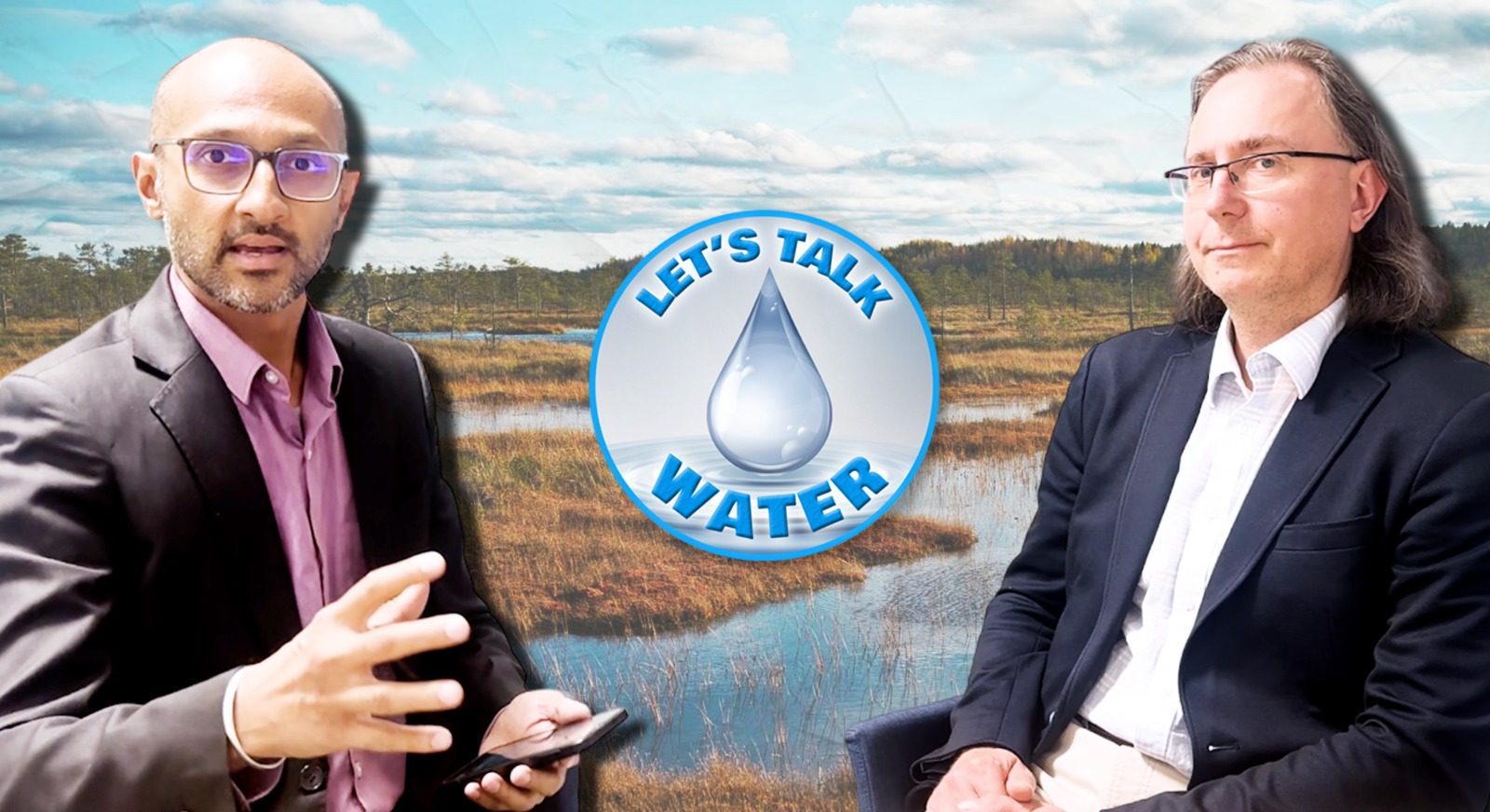India, with its diverse climates and vulnerable water tables, stands to gain from Estonia’s data-driven, precision-focused approach. While India’s landscape differs vastly from Estonia’s, the underlying principles of wetland restoration are transferable.
Published Jun 01, 2025 | 11:55 AM ⚊ Updated Jun 01, 2025 | 12:58 PM

Let's Talk Water host Nolan Pinto with Estonia’s Ministry of the Environment, Hanno Zingel.
Synopsis: For India, a nation grappling with climate change, seasonal water crises, and biodiversity loss, Estonia’s science-backed environmental policy may offer key lessons.
On a cold evening in Tallinn in Estonia, advisor to Estonia’s Ministry of the Environment, Hanno Zingel, painted a vivid picture of the country’s ecological transformation. Speaking to Let’s Talk Water host Nolan Pinto, Zingel shared insights into Estonia’s ambitious efforts to restore its ancient peatlands, mires, swamps and bogs — and what India might take away from their experience.
Hanno Zingel is the National Focal Point for Estonia within the Ramsar Convention, specifically working with the Estonian Ministry of Climate. He has also contributed to research on nature conservation history in Estonia, including a paper presented at the Estonian University of Life Sciences.
For India, a nation grappling with climate change, seasonal water crises, and biodiversity loss, Estonia’s science-backed environmental policy may offer key lessons.
Estonia, a flat country with no mountains, is traditionally shaped by wetlands — swamps, peatlands, mires and bogs — which serve as critical ecosystems for species like bears, wolves, lynxes and many more. Decades of Soviet-era land drainage for agriculture and forestry led to the destruction of many of these habitats.
Now, Estonia is turning back the clock with careful planning and precise ecological modelling. “About 23,500 hectares of peatlands have been restored in the last 20 years,” said Zingel. “We use five-step modelling systems to understand how water behaves when we block a single ditch. The goal is to raise water levels without flooding private lands or forests.”
Zingel explains that raised bogs act as long-term carbon sinks, with roughly one tonne of carbon sequestered per square kilometre, offering more permanence than forests. When bogs are drained, they release significant carbon dioxide, contributing to global warming. Conversely, their restoration helps lock carbon underground.
Beyond carbon capture, restored wetlands stabilise ecosystems. During droughts, they store water, and in times of heavy rainfall, they absorb excess water, reducing flood risks. “They are really environmental stabilisers,” Zingel emphasised.
Despite these benefits, only about seven percent of Estonia’s landscape now comprises mires, down from an estimated historical 22 percent. “Many have been lost forever,” Zingel acknowledged, and added: “But we focus on areas where we can still bring back natural conditions.”
India, with its diverse climates and vulnerable water tables, stands to gain from Estonia’s data-driven, precision-focused approach. While India’s landscape differs vastly from Estonia’s, the underlying principles of wetland restoration are transferable.
“We really have a top-level scientific approach to these mode,ls like how to plan, how to raise water to the right levels so as not to flood other areas, this is quite precise wrks achieved,” Zingel added.
India’s own wetlands today are under pressure from urbanisation, pollution, and encroachment. Effective modelling, data collection, and policy enforcement could help replicate Estonia’s success on the subcontinent.
(Edited by Muhammed Fazil)
